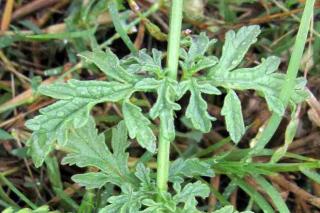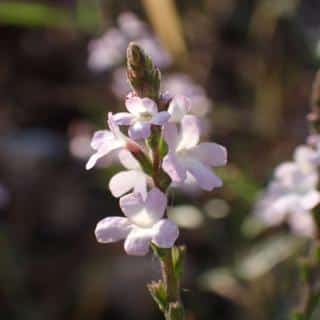

Medicinal verbena is a very interesting wild plant, both for its health benefits and therapeutic value as for its qualities as a fragrant herb.
Name – Verbena officinalis
Family – Verbenaceae
Type – perennial, grown as an annual
Height – 8 to 16 inches (20 to 40 cm)
Exposure – full sun
Soil – light, well-drained
Flowering – from June to September
Spring is the best season to sow medicinal verbena.
Medicinal verbena is a very hardy plant that requires sun. It thrives in light soil, rather poor but cool in summer.
You can start your covered sowing early in March and April or directly in the ground starting from mid-May, after any risk of freezing has disappeared.
If you’ve got a few seeds left over, sow them in bare spots of your vegetable patch, they’ll grow and attract pollinating insects there.
The only true enemies of common vervain are slugs, a bane in spring.
Medicinal verbena, although it’s a perennial, is grown as an annual.
 Common vervain is a plant that requires little care but some attention must be given in order to extend the blooming for a while.
Common vervain is a plant that requires little care but some attention must be given in order to extend the blooming for a while.
After the first fall frost spells, you can pull your medicinal verbena out; the following year’s blooming will be insignificant.
That is the time to common vervain flowers and leaves for your winter herbal tea.
Since it is vulnerable to aphid attacks, read up on how to treat against aphids if need be.
However, you won’t have any caterpillar problems due to large white, since it’s a repellent. Plant verbena near cabbage to protect your harvest!
Also called the Venus herb, common vervain has long been used for its medicinal properties.
 Harvesting common vervain is most often performed from May to September, or even October in warmer climates.
Harvesting common vervain is most often performed from May to September, or even October in warmer climates.
The flowers are the plant part that are collected from medicinal verbena, and they can be used both fresh or dried.
Collect flowers often during the vegetation phase, when flowers appear and use them as needs as needs arise or condition them for storage.
 Medicinal verbena, also called common vervain, is a herbaceous perennial plant that is grown just like an annual, except if you can provide shelter from freezing winters.
Medicinal verbena, also called common vervain, is a herbaceous perennial plant that is grown just like an annual, except if you can provide shelter from freezing winters.
It can grow up to 8 or 16 inches (20 to 40 cm) tall and the flowered tips and dried leaves are what is used for its health benefits.
It can easily be found in the wild, in prairies or along pathways, and it’s used for both herbal infusions and to flavor dishes.
Lemon verbena (Aloysia triphylla, Aloysia citriodora) is the species most used to prepare herbal tea from, but it is a different species altogether.
Feel free to water abundantly in warm weather.